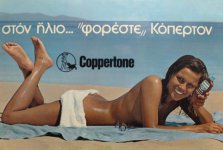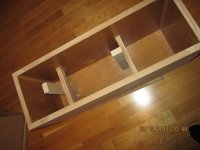That's not what Salas said, listen to him, he knows what he's talking about.Yes I will, or some rubber/plastic feet inbetween, I have had that until now.
bbggg: I know Salas knows what he is talking about, so do I, I have been into this hobby for 25 years, at least. I will try what works best 🙂.
alspe: I will post a real review when the speakers are finished.
Short version: I have listened to some drums and it sounds very good, clear and natural with good dynamics. I prefer the sound compared to my Revel speakers which are considered a good speaker, that says a lot about the sound quality in my book. Of course I have listened a lot to music with them and not only test tones and such.
alspe: I will post a real review when the speakers are finished.
Short version: I have listened to some drums and it sounds very good, clear and natural with good dynamics. I prefer the sound compared to my Revel speakers which are considered a good speaker, that says a lot about the sound quality in my book. Of course I have listened a lot to music with them and not only test tones and such.
Finally got some time to build, the bracing between tweeter and woofer is in place, the port lenght is glued with silicon. Next is the lower bracing, should I have it as close as possible to the woofer for max stability?
Or glue it together with the lower side to side bracing (this makes it placed about 5cm lower than the woofer hole).
Or glue it together with the lower side to side bracing (this makes it placed about 5cm lower than the woofer hole).
Ok, will do that,ty. I will try to speed things up a little now to get all ready for painting 🙂.
Salas: not sure lol, this is still not decided 🙁.
henry: I think it will do as it is, but thanks for the suggestion. When I had no back to front bracing (it was like that when I had it assembled earlier and played music) it worked quite well, so I think the bracings I got now will be sufficient, but thanks for the suggestion. I also do not want to change things from Salas original to avoid any surprises.
henry: I think it will do as it is, but thanks for the suggestion. When I had no back to front bracing (it was like that when I had it assembled earlier and played music) it worked quite well, so I think the bracings I got now will be sufficient, but thanks for the suggestion. I also do not want to change things from Salas original to avoid any surprises.
How about putting cross bracing behind magnets, just enough to touch when u screw the drivers?
That's potentially better but takes precise work. Must have a rubber pad and press with enough force to the back plate when woofer's in position. It wasn't available in the prototype since the cabinet was already braced and available from an older real wood speaker. Thus I can not predict the outcome.
U can use some gasket seal tape for ducting. So make it shy 2-3mm, then the gasket will make it tight.
I just bought some color to test with on a piece of MDF board. It is a copper tone color, I will see if it is a disaster or success 😛. My homage to copper, what would hifi be without it?
Back-to-front bracings are in place, drying. Next I will insert the crossover and damping material. Posting a picture tonight.
Ok, I need some help here, this is the situation:
I bought a polyester/fleece plaid that is about 2mm thick. My plan is to use it on back and side panels to make a soft transition from the panels to the polyester padding I have used so far (se my pictures earlier). My experience is that when using 2 layers of polyester padding behind the woofer on the back panel it was too much (middle range got too sunk in) and one layer worked better. The side panels when bare gave a open sound, using one layer of the polyester padding sounded a little less open. So I thought if using the plaid on the side panels in double or 4 layers making it 4-8mm thick could do the trick (without more filling than that). Salas had a 3cm padding on side panels and back so I should not deviate too much from it. Of course I could use the exact same solution but the no damping on the sides sounding so open and that the woofer Q-value makes it not needing much damping got me thinking. Help appriciated!
Filter will be placed at the bottom with 2 layers of 3cm padding over it and between top bracing and top panel it will be filled like Salas did.
I bought a polyester/fleece plaid that is about 2mm thick. My plan is to use it on back and side panels to make a soft transition from the panels to the polyester padding I have used so far (se my pictures earlier). My experience is that when using 2 layers of polyester padding behind the woofer on the back panel it was too much (middle range got too sunk in) and one layer worked better. The side panels when bare gave a open sound, using one layer of the polyester padding sounded a little less open. So I thought if using the plaid on the side panels in double or 4 layers making it 4-8mm thick could do the trick (without more filling than that). Salas had a 3cm padding on side panels and back so I should not deviate too much from it. Of course I could use the exact same solution but the no damping on the sides sounding so open and that the woofer Q-value makes it not needing much damping got me thinking. Help appriciated!
Filter will be placed at the bottom with 2 layers of 3cm padding over it and between top bracing and top panel it will be filled like Salas did.
Last edited:
Haven't used secondary materials in that speaker, and I don't know the properties of polyester fleece in a speaker, so you are on your own in this one. Trials I guess.
Ok Salas. You used that 3cm filling on the sides all the way until it meets the baffle? It gets rather close to the membrane if so and only on the sides and not top/bottom of the membrane. Doesn´t it make the membrane to react non uniform?
- Status
- Not open for further replies.
- Home
- Loudspeakers
- Multi-Way
- "Tired2way" speaker building.

